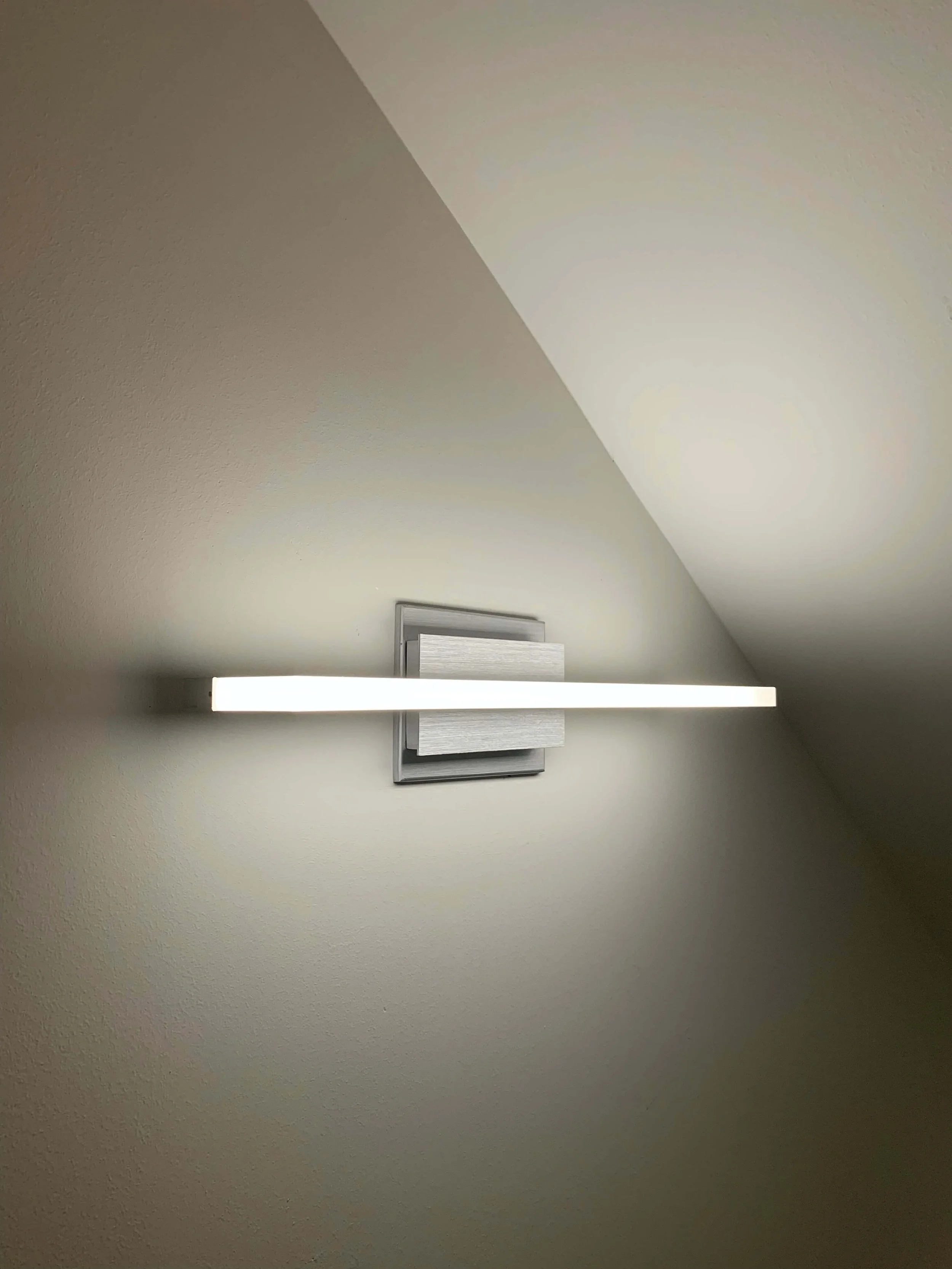Light Affects Colour
How Light Affects Colour
When it comes to the world of interiors, understanding how light affects colour is essential for creating an aesthetically pleasing space.
Lighting has a huge impact on how colours appear in any given situation. Whether it is through natural sunlight or artificial lighting, the type of light you're surrounded by can make all the difference when it comes to how colours appear.
Let’s shed some light on this topic.
__
LIght and Colour
Light is one of the most important factors influencing how colour appears. For starters, the intensity of a light source changes how colours are seen — brighter lights will cause colours to appear more vibrant than under dimmer lighting. Additionally, the temperature of a source will also make a difference: warmer tones such as yellow and red hues create a calming atmosphere while cooler tones like blue create energising vibes. On top of that, the direction of light can also affect how colours are seen. Light coming from behind an object may create a silhouette, while side lighting can help define textures and shapes.
Light affects colour in several ways. For example, artificial lighting can create warmer or cooler tones depending on the colour temperature of the light source. Warmer temperatures come from lights with a yellowish tint and cooler ones from those that have a bluish tinge. This is also true for natural sunlight as well, where warm-toned daylight has been known to bring out richer reds and yellows while cool-toned sunlight may enhance blues and greens. Different types of lighting can cause colours to seem darker, lighter, richer or duller. For instance, fluorescent and LED lights have a cooler hue that will make blues look brighter and greens appear more vibrant. On the other hand, incandescent bulbs will create a warmer atmosphere and make reds appear more saturated.
Another important factor to consider is the brightness of the light. A bright light will generally create ‘louder’ colours and saturate them, while a dimmer light will result in more muted hues. This can be helpful when trying to achieve an atmosphere with subdued tones or a vibrant atmosphere with bold colours.
If you want to maintain true-to-life colour accuracy then it's important to look at how evenly distributed the light is across an area. Uneven lighting can cause some parts of an object or space to appear brighter than others which may lead to distorted colours. To avoid this, use multiple light sources that are spaced out evenly and take into account both their brightness and temperature. Light values can be used to create the perfect atmosphere in any setting by manipulating colours and saturations. Whether it’s boosting vibrancy with brighter lights or creating muted tones with dimmer ones, there’s always something you can do to adjust the tone of your space through careful consideration of lighting.
No matter the situation, understanding how lighting affects colour is essential for any design project. From living room to restaurant decor, being aware of light’s influence on colour will ensure that your desired look and feel comes across as intended. With a little knowledge and creativity, you’ll be able to create beautiful spaces with subtlety or boldness.
__
By understanding how light affects colour, you can create an environment that truly reflects your vision. Whether you are looking to evoke a warm and inviting atmosphere or capture cool and calming tones, knowing how different lights interact with hues makes all the difference! With some careful thought and planning, you can bring life to any space through subtle changes in lighting.
It's important to consider how natural lighting affects colour as well. Sunlight brings out bright and bold shades, but in dimly lit rooms those same shades may seem faded or washed out. The angle of sunlight can also change the appearance of colour; for example, if light hits an object at a low angle it will cast shadows that darken certain areas and give them a more muted tone.
Finally, the position of light is also important. If you have several lights in one area, where you move it can drastically change the colour of an object - from brighter and richer to duller and darker. It’s all about experimenting with different types of lighting and angles to find out how light affects colour for your particular space. With the right balance, it can really bring out the most vibrant hues in any space.
On the other hand, be careful to not overdo it - too much light can wash out colours and make them appear duller. Instead, focus on finding the right balance for your space so you can get the most out of your colours. With a bit of experimentation, you’ll soon see how light affects colour in a way that is truly unique to your own environment.
__
The possibilities truly are endless when it comes to using light in interior design! So remember: consider overall brightness, think about the temperature and direction of light, and always take into account the colours in the room when deciding how to use lighting to bring out the best in your design. Whether you’re creating an inviting space or a captivating atmosphere, getting creative with light will always have transformative results.
__
You Might Also Be Interested In:
>> Creating A Lighting Plan
>> Mood-Boosting Colours
>> Emotional Interior Design










